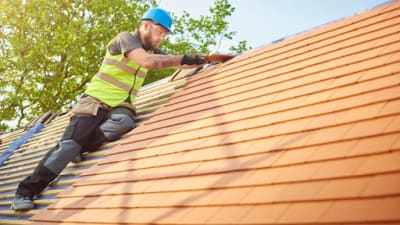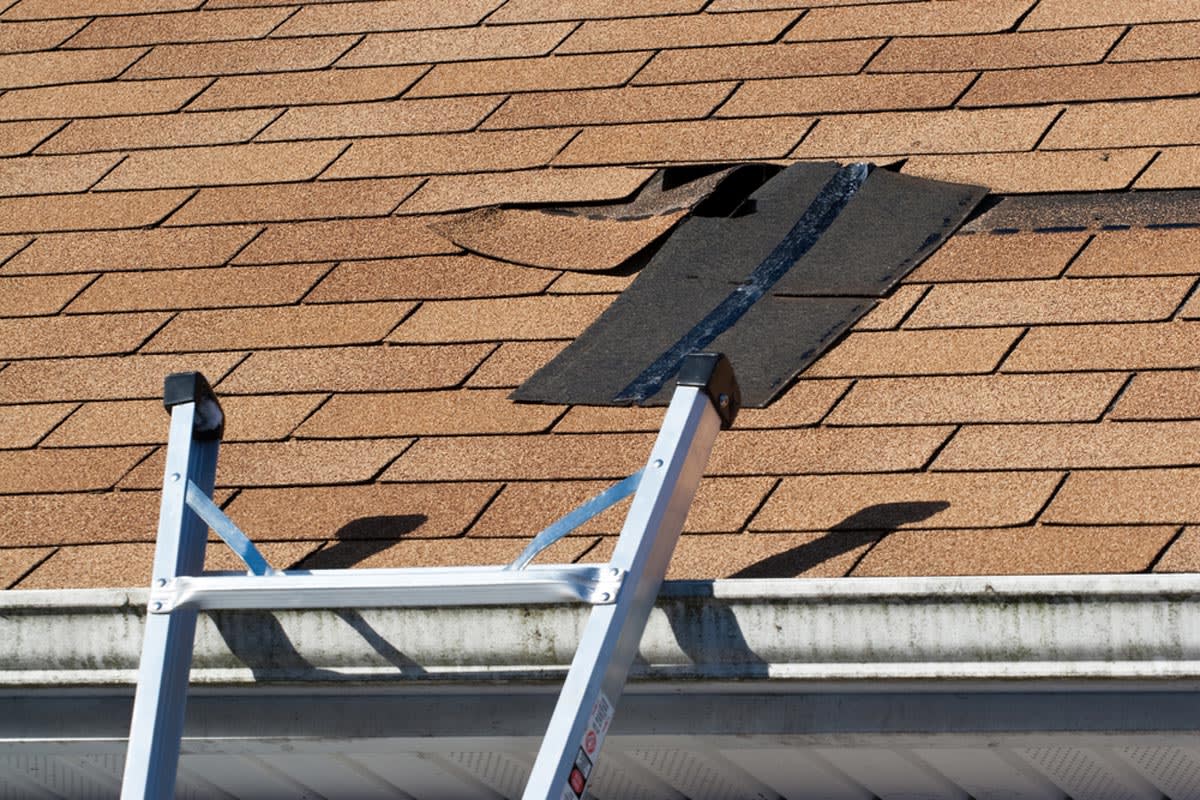Roofing Companies Oahu: Top-Rated Roofers for All Roofing Projects
Roofing Companies Oahu: Top-Rated Roofers for All Roofing Projects
Blog Article
Recognizing the Various Sorts Of Roofing Systems: A Comprehensive Guide for Homeowners
With a range of choices-- ranging from the traditional gable to the modern level-- each type presents one-of-a-kind advantages and challenges that must straighten with the property owner's environmental factors to consider and details requirements. As we check out the ins and outs of various roof covering types, it comes to be obvious that one dimension does not fit all; the right selection may amaze you.
Gable Roofing Systems
Saddleback roofs, characterized by their triangular shape, are amongst the most prominent roof designs due to their simpleness and efficiency in losing water and snow. This design includes two sloping sides that satisfy at a ridge, permitting effective drain and minimizing the risk of water accumulation. The high pitch commonly connected with saddleback roofs improves their capacity to manage heavy rainfall, making them appropriate for various climates.
Along with their practical advantages, saddleback roofs use aesthetic convenience. They can be adapted to various architectural styles, from standard to contemporary homes. The style can also suit added functions such as dormer windows, which enhance all-natural light and air flow in the attic room.
Moreover, gable roof coverings provide sufficient area for insulation, adding to power performance. Property owners can select from a range of roof covering materials, including asphalt shingles, metal, and floor tiles, even more boosting customization alternatives.
Despite their benefits, saddleback roofs may require extra support in areas susceptible to high winds or hefty snowfall. On the whole, the saddleback roof remains a popular selection because of its blend of performance, durability, and aesthetic charm.
Flat Roofs
Level roofs are frequently acknowledged for their minimal style and functional applications, specifically in commercial and industrial settings (oahu roofing). These roofing systems include a horizontal or virtually straight surface, which permits for simple construction and functional space application. While they may do not have the aesthetic appeal of angled roofs, level roofing systems provide numerous benefits, particularly in urban environments where optimizing room is critical
One of the key benefits of level roofs is their ease of access. House owners can use the roofing room for various functions, such as rooftop gardens, balconies, or solar panel installations. Additionally, level roof coverings are commonly extra cost-effective to preserve and mount compared to their sloped equivalents, as they require less products and labor.
Usual materials used for flat roofing systems consist of built-up roof covering (BUR), customized bitumen, and single-ply membranes, each offering distinct advantages. Generally, flat roof coverings serve as a versatile and functional choice for numerous home owners and services alike.
Hip Roofing Systems
Hip roofings are identified by their sloped sides that merge at the top, developing a ridge. This layout stands out from saddleback roofs, as all 4 sides of a hip roof covering incline downwards towards the walls, supplying a more steady structure. The angle of the inclines can differ, permitting flexibility in building visual appeals and performance.
Among the key benefits of hip roofing systems is their capability to endure hefty winds and damaging climate condition. The sloped surface areas allow much better water drainage, minimizing the threat of leaks and water damage. In addition, hip roofings use increased attic room room, which can be used for storage space or perhaps transformed into livable areas.
Nonetheless, building a hip roof can be extra expensive and complicated than simpler roofing kinds, such as gable roofs. The extra material and labor entailed in producing the inclines and making sure correct structural honesty can result in higher costs. Regardless of these downsides, lots of property owners prefer hip roofs for their durability, aesthetic charm, and possibility for power efficiency.
Mansard Roofing Systems
Mansard roofings, often acknowledged by their distinct four-sided design, attribute two slopes on each side, with learn this here now the reduced slope being steeper than the top. This architectural style, stemming from France in the 17th century, is not just aesthetically attractive however practical, as it takes full advantage of the useful area in the upper floors of a building. The high reduced slope enables even more headroom, making it an excellent selection for lofts or attic rooms, which can be converted right into living areas.
Mansard roof coverings are defined by their convenience, accommodating various building designs, from standard to contemporary. They can be created with various products, consisting of asphalt tiles, slate, or steel, offering house owners with a variety of alternatives to official site fit their budgets and preferences. In addition, the design permits the combination of dormer home windows, improving natural light and ventilation in the upper levels.
Nonetheless, it is important to take into consideration the prospective drawbacks. Mansard roofs might need even more upkeep due to the complexity of their design, and their high slopes can be testing for snow and rainfall drainage. Generally, mansard roofings incorporate elegance with usefulness, making them a prominent option among home owners seeking distinct building features.
Lost Roofing Systems
As homeowners increasingly seek simpleness and functionality in their architectural styles, dropped roofs have actually become a prominent option. Identified by a single sloping plane, a shed roofing provides a minimalist aesthetic that matches different home designs, from contemporary to rustic.
One of the key benefits of a shed roofing system is its simple building, which typically converts to reduce labor and material prices. This style permits efficient water drainage, decreasing the risk of leakages and water damages. Additionally, the upright incline supplies ample area for skylights, boosting natural light within the interior.
Shed roofings additionally offer versatility in terms of usage. They can be effectively integrated into additions, garages, or exterior frameworks like structures and sheds. Furthermore, this roof design can accommodate different see this site roofing materials, consisting of steel, asphalt shingles, or also eco-friendly roofings, straightening with environmentally friendly initiatives.
However, it is vital to take into consideration local climate conditions, as heavy snow tons might require modifications to the roofing's angle or structure. On the whole, shed roofs provide a functional and aesthetically pleasing alternative for property owners aiming to make best use of capability without jeopardizing design.
Final Thought


Gable roofs, characterized by their triangular shape, are amongst the most popular roofing styles due to their simplicity and effectiveness in shedding water and snow. oahu roofing. The high pitch typically associated with gable roofs improves their capacity to handle heavy precipitation, making them appropriate for different environments
While they might do not have the aesthetic allure of pitched roofs, level roofing systems supply various benefits, especially in city atmospheres where taking full advantage of area is important.

Report this page